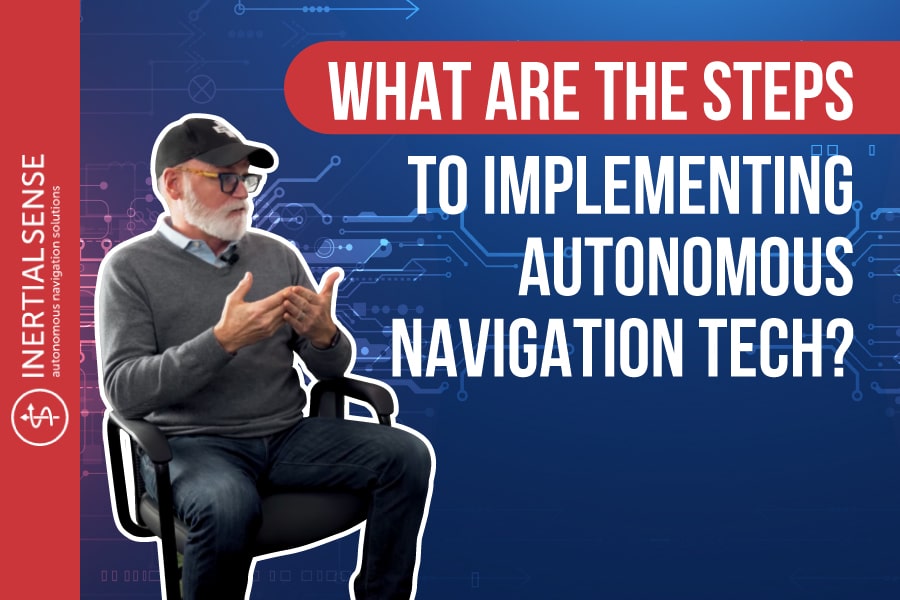
What Are The Steps To Implementing Autonomous Navigation Tech?
You want to take your company and autonomous vehicle fleet to the next level…but how do you do that? Watch this video as Tom and Brett explains the steps to implementing autonomous navigation tech.
Building an autonomous vehicle involves more than just having a robot that follows your command. You want it to develop senses of places its been and objects its seen.
Let Inertial Sense help you do that. Click here and get connected with one of our knowledgeable experts to get you started today!
Learn More:
The Best Sensors for Autonomous Navigation
Why Manufacturers Of Workhorse Vehicles Get Excited About The LUNA Autonomous Navigation Platform
The Limitations of Autonomous Navigation
Video Transcript
So, when they come to us to work with us, and they decide to do that, what does it look like from a practical standpoint on steps to implementing autonomous navigation tech, namely our product into their system?
So there’s generally, I would say three stages, that we’ll go through with a customer. There’s a sort of fact-finding and discovery phase where they tell us about their platform, what their expectations are, what the target vehicle platform is they want to run on, and what kind of timeframe they’re looking at.
So, we look at that and then we say, well the first stage of this is to get a proof of concept, right? It’s take one of your target platform vehicles, pretty much bolt our navigation system onto it, and get it to perform a basic mission. You know, to find a missionary, execute on a mission, avoid objects, deal with areas where GPS is denied, go in areas where you use visual SLAM or dead bracketing, and then get back to its original base. That’s kind of the basic thing that people bite off first. The integration at that point is moderate or more sort of like, it’s more of like bolting it on and making it go, and proving we can do what it does.
There’s a whole other step where it’s commercialization or productization, and that‘s where they want it to be their solution. So that’s more about migrating what we do with our prototype unit into a real piece of manufactured hardware if you will, that runs our software and firmware, or something that sort of slots into what they’re doing, goes under the hood, looks super slick even if you pull the hood back, and then figuring out what it means to get that to market within their channel.
So there’s probably a fair amount of training that we do during that process to say this is how you’re gonna deploy and configure these vehicles and get them run autonomously. But, that’s kind of the basic process.
Yeah, so you were talking about that initial phase of prototyping that the legacy manufacturers will have us come in on and that there’s particular missions or specifications that they want met. Is that coming from us, are we defining those specifications, or do they have a say in that, they play a part in that?
Well, often they come to us with a pretty well-developed idea of what they want out of it, but on the other hand, we’ve been doing this longer than anyone else and we typically have a mission we suggest to them and it more often than not dovetails with exactly what they’re looking for, or it’s like, ‘hey you, know we didn’t think about that, we should incorporate that into what our proof of concept mission is going to be’.
Well, and I’d imagine for most manufacturers they probably care the most about safety, that’s probably their number one thing.
So, yes they do, and the first thing to do is get it to default stop, right? Your default is just you know, off the bat, something gets in the way, to stop, prove you can do that. Then it’s like, okay, stop, and then remove the object and then it continues on away. Okay great. Then it’s stop, figure out what the object is and build a dynamic path around it based on recognizing the object for what it is and what the dynamic path should be around it, whether it’s a soccer ball, a kid, a garbage bag, a leaf blower, or a pile of water that they didn’t know was there.
So that’s the tougher part and that usually takes place after the original proof of concept during more of the commercialization process when implementing autonomous navigation tech.

